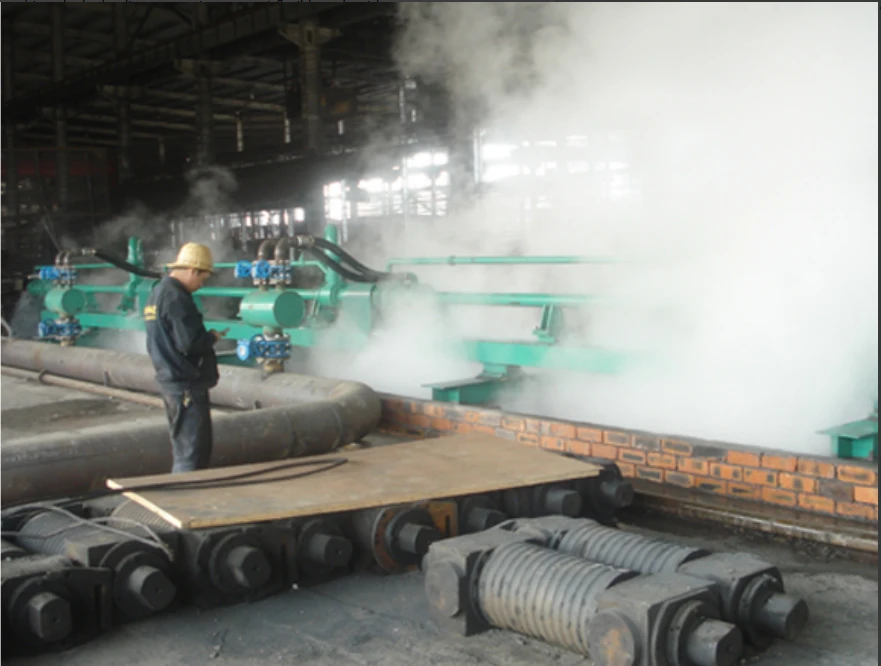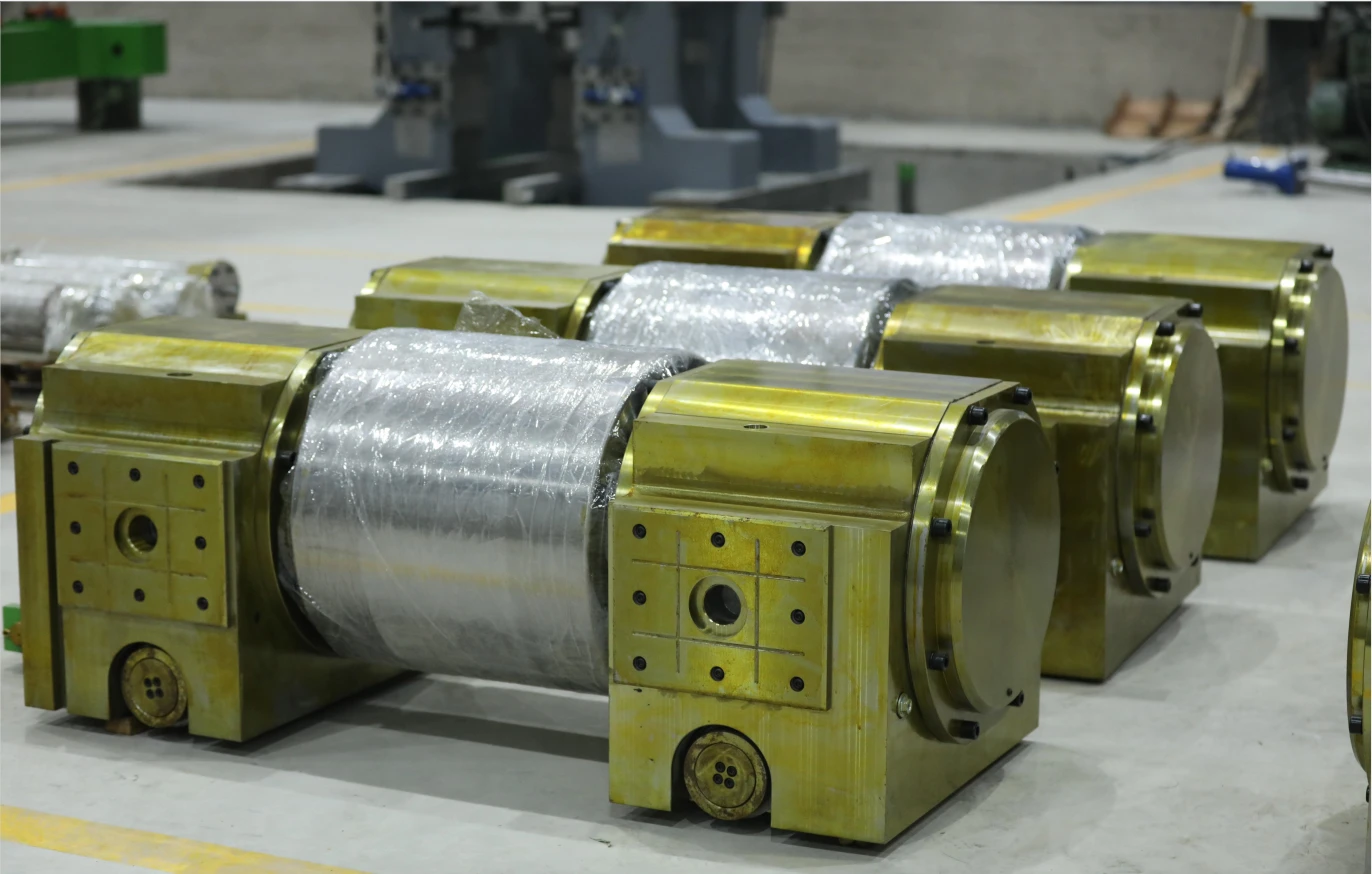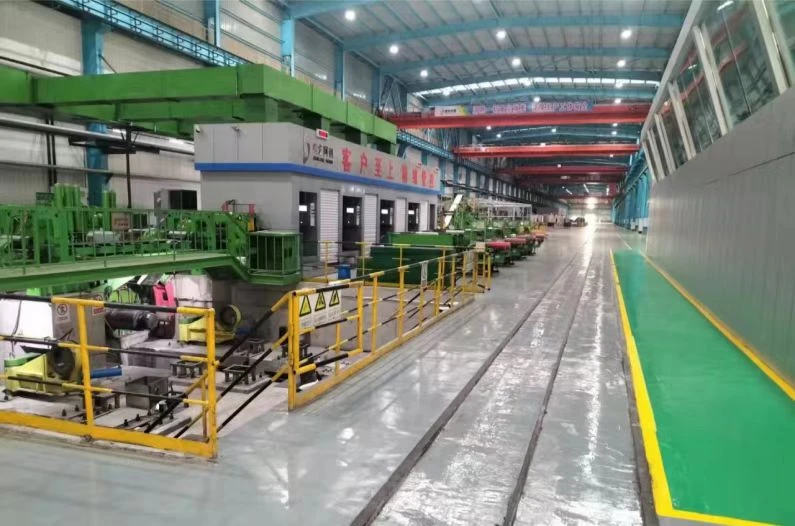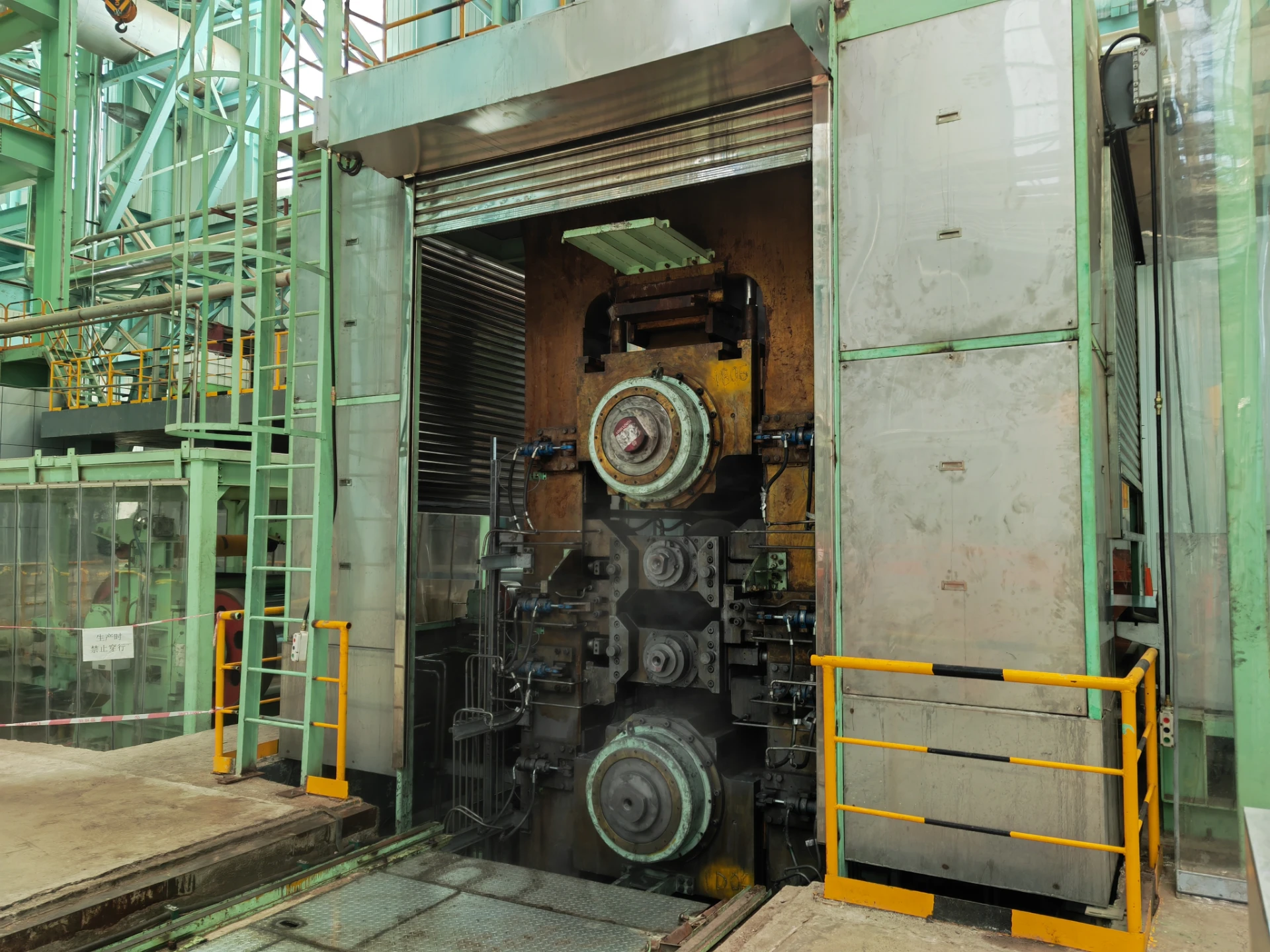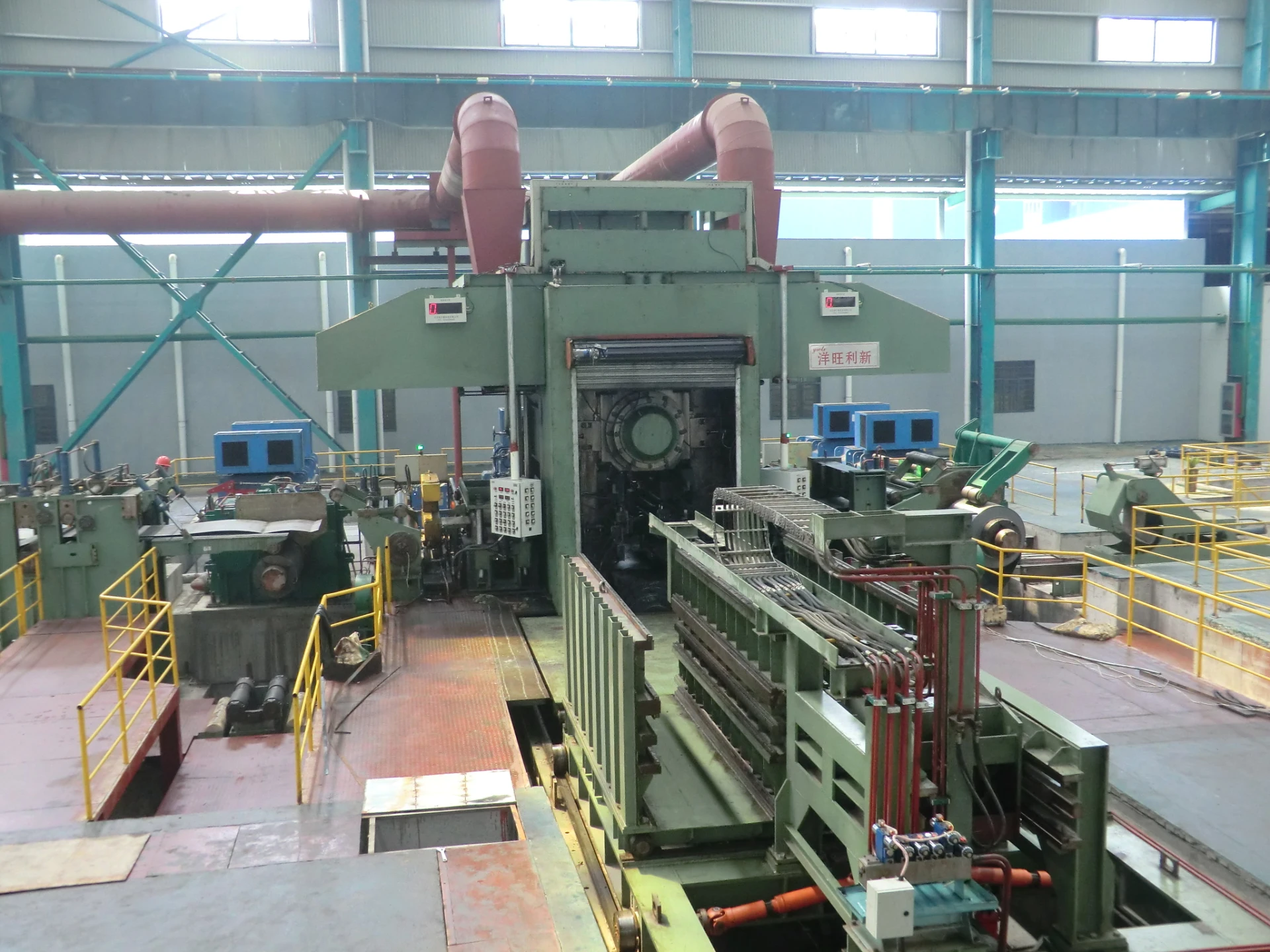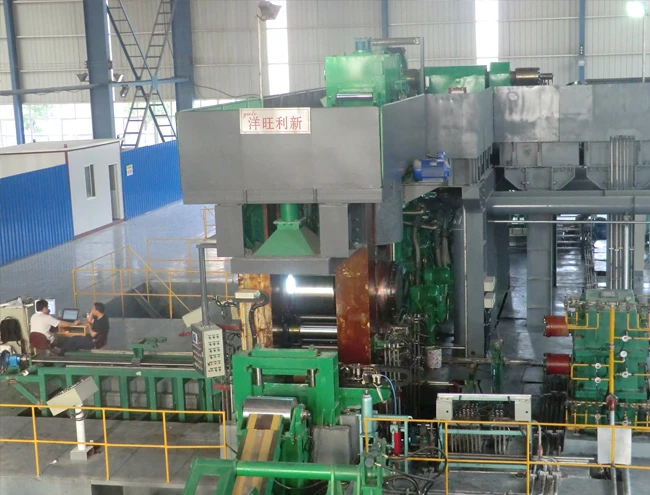
Advanced Water Quenching Process & Devices for Optimal Hardening
Understanding the Critical Role of the **Water Quenching Process** in Modern Metallurgy
The **water quenching process** is a fundamental heat treatment technique in metallurgy, vital for achieving desired mechanical properties in metals, especially steel. It involves rapidly cooling a material from an elevated temperature by immersing it in water, a highly efficient cooling medium. This rapid cooling, often referred to as quenching, is essential for transforming the microstructure of the metal, leading to increased hardness, strength, and wear resistance. Without a precisely controlled **water quenching process**, many high-performance alloys would fail to achieve their optimal operational characteristics, limiting their application in critical industries. The Water Quenching System is specifically designed to facilitate this essential metallurgical step, ensuring consistent and superior material quality.
Industry Trends and Technological Advancements in Quenching
The metallurgical industry is continuously evolving, driven by demands for stronger, lighter, and more durable materials. This translates into significant advancements in the **water quenching process**. Current trends include the development of smart quenching systems with real-time monitoring and control, enabling more precise temperature management and cooling rates. There's also a growing emphasis on environmentally friendly quenching media, although water remains a primary choice due to its efficiency and cost-effectiveness. Innovations in agitator design and nozzle configurations within Water Quenching Systems are aimed at achieving more uniform cooling, minimizing distortion and residual stresses in quenched parts. Furthermore, the integration of computational fluid dynamics (CFD) and finite element analysis (FEA) is revolutionizing how quenching processes are designed and optimized, allowing for virtual prototyping and predicting material behavior more accurately. These advancements underscore the importance of precision engineering in every component of a **water quenching device**.
The Water Quenching System: Precision Engineering for Superior Results
Our Water Quenching System is engineered for unparalleled performance in the **water quenching process** of bars and wires. This state-of-the-art system ensures optimal heat removal and microstructural transformation, critical for enhancing the mechanical properties of various metal alloys. It is built with a deep understanding of thermodynamics and material science, offering a reliable solution for high-volume industrial applications.
Process Flow Explained: The **Water Quenching Process** in Detail
The effectiveness of the **water quenching process** hinges on a series of controlled steps designed to achieve specific material properties. Below is a detailed breakdown of the manufacturing flow within our Water Quenching System:
1. Material Loading & Pre-heating: Raw material (e.g., steel bar or wire) is loaded into the system. Depending on the specific alloy, it may undergo a pre-heating phase to prepare it for uniform austenitization. This reduces thermal shock during the main heating cycle.
2. Austenitization (Heating Phase): The material is heated to a specific temperature, typically above its critical transformation temperature (e.g., 850-950°C for many steels), and held for a predetermined soak time. This ensures that the material transforms into a homogeneous austenitic microstructure, which is necessary for the subsequent phase transformation during quenching. Precision temperature control is crucial here to prevent grain growth or decarburization.
3. Quenching (Rapid Cooling): Immediately after austenitization, the material is rapidly transferred and immersed into the **water quenching process** tank. The Water Quenching System utilizes high-velocity water jets or strategically placed nozzles to ensure uniform and aggressive cooling. The rapid heat extraction prevents the formation of undesirable microstructures (like pearlite or bainite) and promotes the formation of hard, brittle martensite.
4. Post-Quench Treatment (Optional/Subsequent): After the primary **water quenching process**, the material might be too brittle due to the martensitic structure. Therefore, a subsequent tempering process is often applied. Tempering involves reheating the material to a lower temperature (e.g., 150-600°C) and holding it for a period, which reduces brittleness, relieves residual stresses, and improves toughness without significantly sacrificing hardness.
5. Unloading & Inspection: The quenched and potentially tempered material is then unloaded for final inspection. This includes hardness testing, microstructural analysis, and dimensional checks to ensure it meets the required specifications.
(Note: For a visual representation, a detailed schematic diagram with flow arrows and key node descriptions would be included here in a typical product page.)
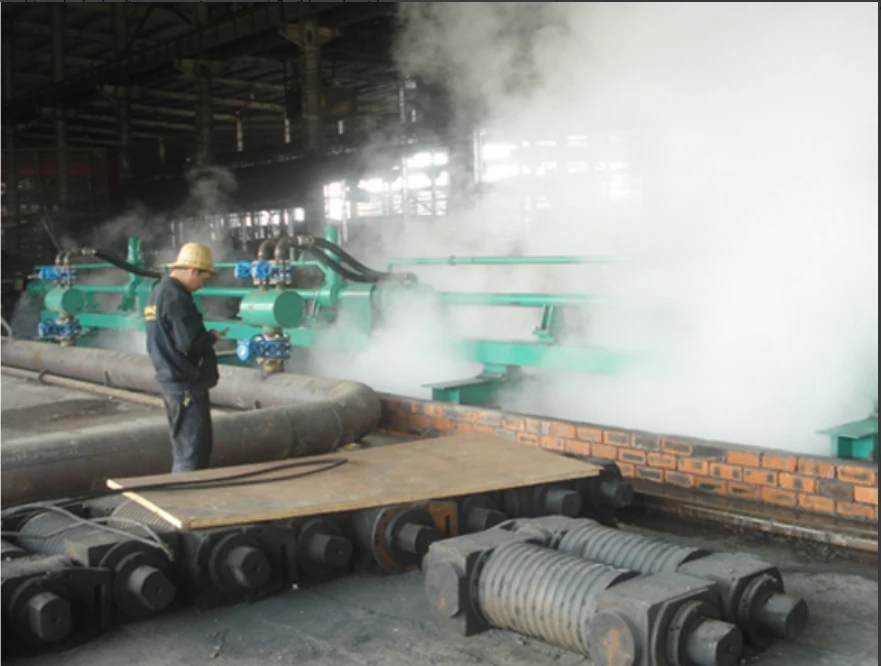
Illustrative image of a component undergoing a **water quenching process**.
Technical Specifications of the Water Quenching System
Our Water Quenching System is built with robust materials and precise manufacturing techniques to ensure longevity and consistent performance.
- Product Material: Constructed primarily from high-grade stainless steel (e.g., SS304 or SS316 for wetted parts) for superior corrosion resistance and durability, especially in the presence of water and elevated temperatures. Structural components are often made from high-strength carbon steel.
- Manufacturing Process: Components undergo meticulous manufacturing processes including CNC machining for precise tolerances, advanced welding techniques (e.g., TIG, MIG) for structural integrity, and forging for critical high-stress parts to enhance grain structure and mechanical properties.
- Detection Standards: Every system adheres to stringent international quality and safety standards, including ISO 9001:2015 for quality management systems, ANSI/ASME standards for pressure vessels and piping (if applicable), and CE marking for European market compliance. Material traceability reports (e.g., EN 10204 3.1) are provided.
- Design Lifespan: Engineered for a operational lifespan of 15-20 years with proper maintenance, ensuring a strong return on investment. Key wear parts are designed for easy replacement.
- Applicable Industries: Extensively used in metallurgy (for rebar, wire rod, pipes, castings), petrochemical (components requiring high strength and corrosion resistance), automotive (gears, shafts), aerospace (structural components), and general manufacturing for heat treatment of various metal parts. The system is also crucial in the production of high-strength components for the marine and mining industries.
Advantages in Typical Application Scenarios
The advantages of our Water Quenching System are evident across diverse industrial applications, highlighting its efficiency and reliability in the **water quenching process**:
- Energy Efficiency: Optimized pump and nozzle designs minimize water consumption and power usage while maximizing cooling efficiency. Advanced circulation systems reduce the need for constant replenishment.
- Corrosion Resistance: Utilization of SS316L in critical wetted components ensures excellent resistance to corrosion from varied water chemistries and prevents scaling, extending the system's operational life and maintaining water quality.
- Uniform Quenching: Patented agitation and nozzle configurations ensure a uniform cooling rate across the entire workpiece, minimizing distortion and ensuring consistent hardness, reducing post-quenching straightening requirements.
- Operational Safety: Integrated with advanced sensors and control systems for real-time temperature and flow monitoring, ensuring safe operation and preventing overheating or overflow. Emergency shutdown protocols are standard.
- Scalability and Customization: Available in various sizes and configurations to meet specific production volumes and material dimensions, ensuring it can be integrated seamlessly into existing production lines.
Performance Parameters of the **Water Quenching Process**
The efficacy of the **water quenching process** is quantified by several critical parameters that dictate the final mechanical properties of the material. Understanding these parameters is key to achieving optimal results and ensuring product quality.
| Parameter | Typical Range/Value | Impact on Material |
|---|---|---|
| Quenching Medium | Water (Pure, Polymer Additives) | Determines cooling rate; water provides very fast cooling. Polymer additives can moderate cooling. |
| Quenching Temperature | Room Temp to 60°C (Water Bath) | Lower temp for faster cooling; higher temp for reduced thermal shock in some alloys. |
| Cooling Rate (CR) | ~300-500 °C/s (for steel) | Crucial for martensite formation. Too slow: pearlite/bainite. Too fast: cracking/distortion. |
| Hardness Achieved (HRC) | 45-65 HRC (depending on steel alloy) | Directly related to martensite content; a primary goal of quenching. |
| Immersion Time | Seconds to Minutes | Sufficient time for full transformation but avoiding unnecessary prolonged exposure. |
| Part Size/Geometry | Varies greatly | Influences cooling uniformity; larger/complex parts require more careful quenching system design. |
| Residual Stress | Typically compressive on surface, tensile in core | Inherent outcome; managed through tempering. Optimized quenching minimizes extremes. |
Comparing Water Quenching Solutions: Why Choose Us?
In a competitive market, choosing the right **water quenching device** and partner is crucial. While many manufacturers offer quenching solutions, our Water Quenching System stands out due to its commitment to innovation, quality, and comprehensive customer support.
Many competitors focus on off-the-shelf solutions, which may not fully address unique operational challenges or specific material requirements. Our approach, in contrast, prioritizes a consultative process that includes in-depth analysis of your needs, material science expertise, and customized engineering. We integrate the latest control technologies, such as PLC (Programmable Logic Controller) systems with HMI (Human-Machine Interface) touchscreens, for intuitive operation and data logging, a feature often simplified or omitted by competitors to cut costs. Furthermore, our emphasis on using premium materials like SS316L for all critical wetted parts, as opposed to lower-grade stainless steels or coated carbon steel used by some, directly translates to a longer service life and reduced maintenance costs for our clients.
| Feature/Aspect | Our Water Quenching System | Typical Competitor A (Standard) | Typical Competitor B (Budget) |
|---|---|---|---|
| Customization Level | High (Tailored for material, capacity, space) | Medium (Modular options) | Low (Standardized models only) |
| Material of Construction (Wetted Parts) | SS316L (Superior Corrosion) | SS304 / Coated Carbon Steel | Coated Mild Steel |
| Control System | Advanced PLC with HMI, Data Logging, Remote Access | Basic PLC with Push-button Panel | Manual/Electromechanical Controls |
| Cooling Uniformity Technology | Optimized Jet Nozzles, Patented Agitation, Flow Simulation | Standard Spray Nozzles, Basic Pump Circulation | Simple Immersion Tank |
| Energy Efficiency (per ton) | Excellent (Minimized water/power usage) | Good | Moderate (Higher operating costs) |
| Lifespan Expectancy | 15-20+ Years | 10-15 Years | 5-10 Years |
| Post-Sales Support | Comprehensive (Installation, Training, 24/7 Remote, On-site) | Standard (Installation, Limited Remote) | Basic (Parts only) |
| Certification & Compliance | ISO 9001, CE, ANSI/ASME, Material Traceability | ISO 9001 (Basic) | Minimal/Self-declared |
Custom Quenching Solutions for Unique Industrial Needs
Recognizing that every industrial application of the **water quenching process** has unique demands, we specialize in providing bespoke solutions. Our engineering team works closely with clients to develop a Water Quenching System tailored to specific material types (e.g., carbon steel, alloy steel, stainless steel, non-ferrous alloys), dimensions of workpieces (from small wires to large bars), desired cooling rates, and integration requirements within existing production lines. This includes designing custom tank sizes, specialized conveying mechanisms for material handling, advanced water circulation and filtration systems, and sophisticated temperature control units. We leverage our extensive experience and advanced simulation tools (such as CFD) to predict and optimize the quenching behavior for your specific components, ensuring consistent quality and performance.
Application Case Studies and Client Trust
Our commitment to excellence in the **water quenching process** is demonstrated through our successful installations and long-standing client relationships. We have served a diverse range of industries for over two decades, accumulating invaluable experience.
Case Study: High-Strength Rebar Production
A leading metallurgy client required a solution to produce high-strength rebar with improved ductility and uniform hardness across long lengths. Their existing system struggled with inconsistent cooling, leading to varied mechanical properties and high scrap rates. We designed and implemented a custom Water Quenching System featuring multi-zone water flow control and specialized guides to ensure perfect alignment and even exposure. The new system drastically reduced material non-conformity, improved product consistency, and led to a 15% increase in production efficiency, exceeding the client's quality benchmarks and reducing operational costs. This real-world application of the **water quenching process** showcased our ability to deliver measurable improvements.
Client Feedback: Automotive Component Manufacturer
"The Water Quenching System provided by [Company Name] has been a game-changer for our gear manufacturing line. The precision and consistency in the **water quenching process** have virtually eliminated distortion issues that plagued our previous system. Their customer support, especially during installation and initial operation, was exceptional. We now consistently achieve the desired microstructure and hardness in our automotive components, leading to a higher quality end product and reduced rework." - Production Manager, Global Automotive Supplier.
Our authority in the field is backed by numerous industry certifications, including ISO 9001:2015 for Quality Management Systems, demonstrating our adherence to global best practices. We are proud to be a trusted partner for major industrial groups worldwide, contributing to their success through our cutting-edge **water quenching device** technology.
Commitment to Trustworthiness: Delivery, Warranty & Support
At [Company Name], we understand that investing in a complex system like a Water Quenching System requires confidence in the supplier. Our commitment to trustworthiness is reflected in every aspect of our service:
- Delivery Cycle: Typical lead times for a standard Water Quenching System range from 12-16 weeks, depending on customization levels and current production schedules. We provide clear, transparent timelines from order placement to factory acceptance testing (FAT) and final commissioning.
- Quality Assurance & Warranty: All systems undergo rigorous quality control inspections and performance testing before shipment. We offer a comprehensive 12-month warranty on parts and labor, starting from the date of commissioning or 18 months from shipment, whichever comes first. Extended warranty options are available.
- Customer Support: Our dedicated technical support team provides 24/7 remote assistance, troubleshooting, and diagnostic services. On-site technical support for installation, commissioning, and training is also available globally, ensuring your team is fully equipped to operate and maintain the **water quenching device**. We maintain a readily available stock of critical spare parts to minimize downtime.
Frequently Asked Questions about the **Water Quenching Process**
- Cracking: Due to excessive thermal stress or transformation stress.
- Distortion/Warpage: Uneven cooling causing differential contraction.
- Incomplete Hardening: Insufficient cooling rate leading to non-martensitic microstructures (soft spots).
- Excessive Residual Stress: Can lead to premature failure in service.
- Reduced Toughness: If tempering is not adequately performed after quenching.
Optimize Your Production with a Leading Water Quenching System
Ready to enhance your material properties and streamline your heat treatment process? Contact us today to discuss how our bespoke Water Quenching System can meet your specific industrial needs.
Explore Water Quenching SystemReferences:
- ASTM International. "ASTM A370: Standard Test Methods and Definitions for Mechanical Testing of Steel Products." Annual Book of ASTM Standards, 2023.
- ASM International. "ASM Handbook, Vol 4E: Heat Treatment of Steels." ASM International, 2021. https://www.asminternational.org/news/publications/handbook-series/heat-treating-quench-and-temper
- ISO 9001:2015. "Quality management systems - Requirements." International Organization for Standardization, 2015.
-
YWLX’s 1450mm Six-Hi Reversing Mill Goes Live in BangladeshNewsNov.24,2025
-
Adjusting Roll Gap in 6Hi Reversing Cold Rolling Mill for Thin StripNewsNov.13,2025
-
Quality Control Standards for Automatic Gauge Control in Strip RollingNewsNov.13,2025
-
Effect of Skin Pass Rolling on Metal DuctilityNewsNov.13,2025
-
Key Components of a Modern TempermillNewsNov.13,2025
-
Common Wear Patterns of Work Roll in Tandem Cold Mill OperationsNewsNov.13,2025
-
Revolutionary Skin Pass Rolling Technology for Enhanced Steel QualityNewsNov.04,2025




